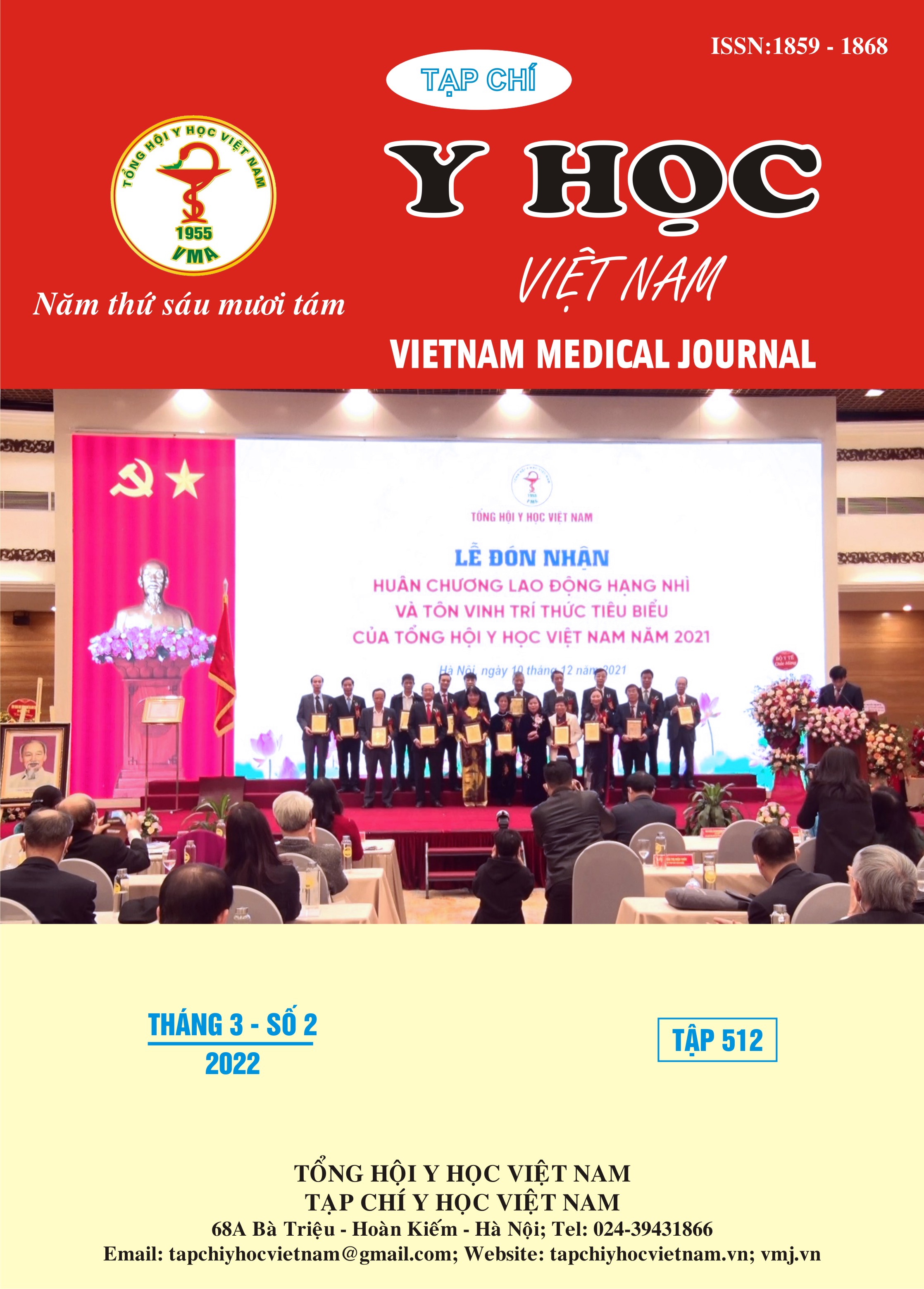EVALUATION OF ROTATOR CUFF TENDON INJURY CHARACTERISTICS OF SHOULDER WITH MAGNETIC RESONANCE IMAGING AT HAI DUONG GENERAL HOSPITAL
Main Article Content
Abstract
Purpose: To describe the magnetic resonance (MR) imaging characteristicsin rotator cuff tendon injury of shoulder joints. Method: A descriptive cross-sectional study. Results: The rotator cuff tendon injury accounted for 24.7%. The main age was 40-60 years old (58.8%), followed by >60 years old accounted for 5.3%, and <40 years old accounted for 5.9%. The rate of rotator cuff tendon injury in men (64.7%) was higher than that of women (35.3%). The time from rotator cuff tendons injury to MRI examination was mainly 6 weeks to 6 months (58.8%). Causes of rotator cuff tendon injury were mainly trauma (41.2%), degeneration (29.4%), and inflammation around the shoulder joints (23.5%). The rotator cuff tendons injury was mainly in the right shoulder (70.6%), and the left shoulder was only accounted for 29.4%. Partial fracture of the rotator cuff tendon accounted for 100% (mostly rupture of the tendon of the supraspinatus muscle), and “through-and-through” rupture (64.7%). The degree of the rotator cuff tendon injury were was 23.5% (grade I), 76.5% (grade II), and no rupture at grade III, respectively. The rotator cuff tendon injury was commonly associated with effusion (82.4%), followed by bone marrow edema (58.8%).
Article Details
References
2. Nguyễn Phương Thúy (2017), Đối chiếu siêu âm với cộng hưởng từ thường quy trong phát hiện tổn thương gân cơ chóp xoay do chấn thương,Thạc sỹ y học, Đại học Y Hà Nội.
3. Al- shawi A., R. Badge and T. Bunker, (2008), "The detection of full thickness rotator cuff tears using ultrasound", Bone & Joint journal, 90(7), pp.
4. Beggs I (2011), "Shoulder ultrasound", WB Saunders, pp.
5. Berna – Serna J. D., Redondo, M. V et al (2006), "A simple technique for shoulder arthrography", Acta Radiologica, 47(7), pp.
6. Biswas D., Bile, J. E et al (2009), "Radiation exposure from musculoskeletal computerized tomographic scans", JBJS, pp.
7. Cleland J., Koppenhaver, S., & Su, J. (2015), Netter's Orthopaedic Clinical Examination E-Book: An Evidence-Based Approach, Elsevier Health Sciences, pp.
8. Ditsios K.Agathangelidis et al (2012), Long head of the biceps pathology combined with rotator cuff tear, Advances in orthopedics, pp.
9. Fischer C. A et al (2015), "Ultrasound and MRI in the assessment of rotator cuff structure prior to shoulder arthroplasty", Journal of orthopaedics, pp.


